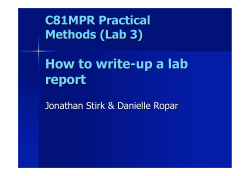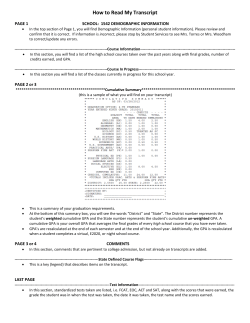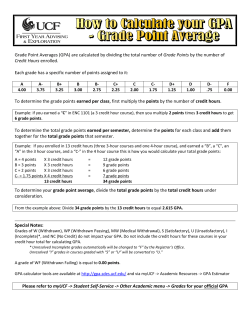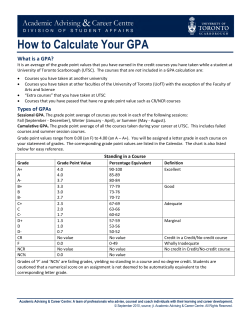
Past and Present of Large Volume Press Technique Natalia Dubrovinskaia
Past and Present of Large Volume Press Technique (Experiments with Large Sample Volumes) Natalia Dubrovinskaia Mineralphysik und Strukturforschung Institut für Geowissenschaften Universität Heidelberg Germany Outline • • • • Nomenclature and definitions Methods for generating static pressures Evolution over past 50 years Examples Some Definitions P = F/A P = Pressure F = Force A = Area So High Pressure can be achieved with: Larger force-->bigger sample volume Smaller area-->smaller samples Methods for Generating Static Pressures Extreme values of intensive properties (pressure, temperature, voltage) may me obtained through: • Disproportionation • Gathering and focusing • In situ energy transformation Disproportionation "Give me a place to stand and, with lever, I will move the world." (Archimedes) Hydraulic pumps and rams operate on similar principles to those used by levers and make it possible to exert very large forces on small areas, thus giving rise to high pressures. Pressures derived by transferring the large thrust of a hydraulic ram to a small area (to generate high pressure) are limited by the compressive strength of the transferring material. Limitation imposed by the strengths of materials can sometimes be circumvented by inventive design. Geometrical considerations increase the pressures obtainable from high-pressure devices. Landmark HP Devices (in order of their development) • • • • (1) piston-cylinder, (2) Bridgman anvil, (3) the belt, and (4) multiple anvils, the principal multianvil types being the tetrahedral press and the cubic press All other devices, by whatever name they may be called, are derivatives of these! Piston-cylinder • Origins lost in antiquity • HPHT importrant adaprtations due to Parsons & Coes • P ~ 5 GPa • Upper pressure limit is set by failure of the piston A piston confined by the cylinder drives the smaller piston into its cylinder, this being the disproportionation principle. In the field of hydraulics this type of device is called an intensifier. Parsons P~1.5 GPa, T~ 3000°C 1880-1928 diamond synthesis program & Coes Coes, Science (1953) P~3.5 GPa, T= 500-800°C Piston-cylinder • • • • Piston-cilinder device of tungsten carbede using two rams • For the highest pressure the cobalt content should beonly 3%. Such a tungsten carbide is very brittle. Therefore the alignment of the piston and the cylinder and the hydraulic ram providing the thrust must be nearly perfect to prevent off-axis loading. A double-ended piston-and-cylinder device requires extra special care in the alignment and in the parallelism of the various components with the moving elements of the hydraulic press. The piston should be as short as possible and should protrude as little as possible from the bore of the cylinder. The protruding part of the pistonis the weak part, and fracture will usually occur there. A tight-fitting collar around a portion of the protruding part of the piston is very helpful in preventing breakage on the exposed piston ends. Simple Cell Assembly Can one really perform "hydrostatic" experiments on solid substances? “Frictional holdup”; geometrical effects Cell assembly for internal resistance heating Hysteresis loop for pyrophylite Because of the hysteresis in solid pressure transmitting substances (apparatus friction also enters in), calibration of pressure apparatus is usually made on a basis of ascending (increasing) pressure only! Opposed –Anvil Devices The massive support principle Opposed –Anvil Devices Bridgman‘s anvil Percy W. Bridgman (1882-1961) The Nobel Prize in Physics 1946 0.6 mm 10 mm Pipestone AgCl Main disadvantage: pressure gradients due to anvils deformation and elasticity Pressure calibration General Electric Diamond Project Left to right are Drs. Francis P. Bundy, Herbert M. Strong, H. Tracy Hall and Robert Wentorf. Anthony Nerad was the project manager and J.E. Cheney was an assistant to Drs. Strong and Bundy. Also assisting the physicists was Hal Bovenkerk (not shown). In the fall of 1951 General Electric assembled a team of scientists charged with the task of transforming carbon into diamond. This is the giant double-acting press that was built at a cost of around 125,000 1951 dollars with the aim of synthesizing diamonds. The behemoth was built in Birdsboro, Pa. and its construction took nearly two years. The two rams were eventually tied together to give it the capability of delivering 1000 tons of force. This is the press identified in GE press releases as the one on which diamonds were first made. The Watson-Stillman press on which diamonds were in fact first synthesized is visible in the lower left-hand side of the picture. H. Tracy Hall and Robert Wentorf The Belt Apparatus (1953) H. Tracy Hall (1919-2008) -The massive support principle (tapered piston) -tapered conical chamber -Increased stroke as combined effect of double-ending, tapered gasket and sanwiched gasket -allows higher P than PC at the same cost and no need in clamping cylinder -not sensitive to misalignment soapstone (steatite), pyrophylite The Belt T. Hall F. Bundy Diamond Production 30,000 ton press in NIRIM, Tsukuba, Japan Belt Apparatus Max P=6 GPa Cell Volume=1 liter Uniaxial Multiaxial from Roy and White (1964) Disadvantages of uniaxial devices Opposed-anvil, piston-and-cylinder, the belt- uniaxial devices. The means for mechanically reducing the volume of a substance is accomplished by moving certain apparatus components toward each other along a line. When quasi-hydrostatic pressure transmitting materials are used, • • • pressure gradients will invariably be set up within the cell in a pattern depending on the movement of the compressing members; a barrel shape of final sample; the sintered product will tend to delaminate (break into several disks perpendicular to the axis of compression) after pressure is released This problem can be overcome to some extent by surrounding the heater sample tube with a material that is more hydrostatic than pyrophyllite, for example, sodium chloride Multi-Anvil Apparatus Tetrahedral Press might be considered a three- Cluster of tetrahedral anvils dimensional extension of the two dimensional Bridgman anvil concept. The principle of massive support is still at work in the tetrahedral press and other multianvil presses, but to a lesser extent than in Bridgman anvils. The original tetrahedral press, T. Hall, 1999. Small tetrahedral anvil press in ISSP-Tokyo in 2000 Multi-Anvil Apparatus Cubic Press Wedge-type, Cubic-Anvil Apparatus in Tsukuba, Japan Anvil guide for cubic press, T. Hall Force [100] Force [111] Kumazawa (1977) Force [111] Conceptual Diagram of DIA-type Cubic-Anvil Apparatus Multi-Anvil Apparatus • “Large volume” specimens -1 mm3 to 1cm3 • Adjust and Control – T and dT/dz – P and dP/dz – Stress and Strain State – Long run duration at stable T-P – Chemical state (e.g., pO2) Nomenclature of High Pressure Apparatus • Uniaxial: • Piston-in-cylinder • Bridgman/Drickamer -->Diamond anvil cell [DAC] • Belt-type apparatus • Multiaxial: • Single stage: force transmitted in one stage to cell assembly • Tetrahedral-anvil: 4 rams, tetrahedron cell assembly • Cubic-anvil: 6 rams, cubic cell assembly • Two-stage: force transmitted in two stages to cell assembly • 6-8 or MA8: 6 first-stage anvils, driving second-stage of 8 cubes, compressing cell assembly • Examples: Split-sphere or split-cylinder apparatus • Three stage: force transmitted in three stages to cell assembly • 6-8-2: 6 first-stage anvils, driving second-stage of 8 cubes, driving 2 opposed anvils, compressing cell assembly Two-stage Bayreuth Large Volume Multianvil Apparatus Split-cylinder Frost et al PEPI (2004) 5000 ton press at Bayerisches Geoinstitut, Two-stage Bayreuth Three-stage from Endo and Ito (1982) 6/2: Going to megabar Utsumi et al., 1986; 2004 Current Record Pmax = 63 GPa E. Ito (Feb 2004) Katsura et al (2004) Paris-Edinburgh Press Besson et al., 1992 P> 10 GPa Toroidal anvil arrangement + Small hydraulic 250 ton press: ~50kg weight (1 ton- commercially available with the same capacity) Neutron powder diffraction Samples: 100 mm3 Small press to fit in a standard hutch Paris-Edinburgh Press • Pressure homogeneity as good as in MA cells • Pressure homogeneity is far better than on opposed flat anvil systems which generate strong biaxial components of stress and strain • Quasi-spherical compression of the sample High-pressure cells developed in Russia Based on Bridgman anvils 1960- lentil-type P~6 GPA T~1600°C HT zone~ 60 cm3 (24 g diamonds per cycle) Stishovite synthesis (1961) (P~ 9 GPa, T~1500°C) *********************************************** 1984- toroid-type Khvostantsev, 1984 -decreases extrusion of central part of gasket -large clearence between the anvils at HP -P in toroidal depression reduces shear stress in the punch -ultimate P depends on the working volume Paris-Edinburgh Press Gaskets: Ingredients: B: Boron from Sigma ... B-3135 Practical grade R: Resin LY556 from - Italian distributor: H: Hardener HT972 (same provider as the resin) For a 3 g pellet: 2.25 g B + 0.59 g R + 0.16 g H (75% B + 19.7% R + 5.3% H in weight) (A 3 g pellet corresponds approximately to a cylindrical rod of 1.3 cm2 section times 12 mm length. These are the original values for the 13 mm Specac pelletter.) Wilson Crichton, 2005, ESRF Summary • There is a permanent progress in PT ranges reachabel using MA techniques • Special designes are adapted for specific purposes • Progress is based on development of new superhard materials and invantive designs • Creativity of individuals has the same value as more than 200 years ago
© Copyright 2025
















